Abstract
An immunohistological study showed differences in the expression of mucus-associated gastric M1 and intestinal M3 antigens between the proximal (100 cases) and distal (200 cases) colonic adenocarcinomas. Such a regional difference was not observed in the normal colon. A total of 55% and 78% of proximal tumours produced M1 and M3 antigens, respectively (versus 13% and 47% in the distal tumours). The high percentage of M1 positive proximal cancers could be explained by the higher percentage (i) of mucus-producing tumours, such as signet ring cell (6% vs 1%) or mucinous adenocarcinomas (29% vs 11%); and (ii) of M1(+) well-differentiated adenocarcinomas (45% vs 8.5%) and the presence of undifferentiated carcinoma producing M1 antigens (12% vs 0%). These latter carcinomas were found in older patients (mean age 78 years vs 66 years). These results suggest that, on the proximal side, the stem cells were more often engaged in a differentiation process involving the expression of M antigens than were those of the distal side. Moreover, the proximal stem cells more frequently produce a foetal differentiation program showing simultaneous expression of M3 and M1 antigens (in 48% of proximal tumours, vs 11.5% for the distal side). Around 12% of proximal adenocarcinomas (vs 2% of distal tumours) contained stem cells engaged in a cell differentiation program not observed in the normal adult or foetal colon, involving the predominant expression of M1 antigens associated with an undifferential histological pattern.
Full text
PDF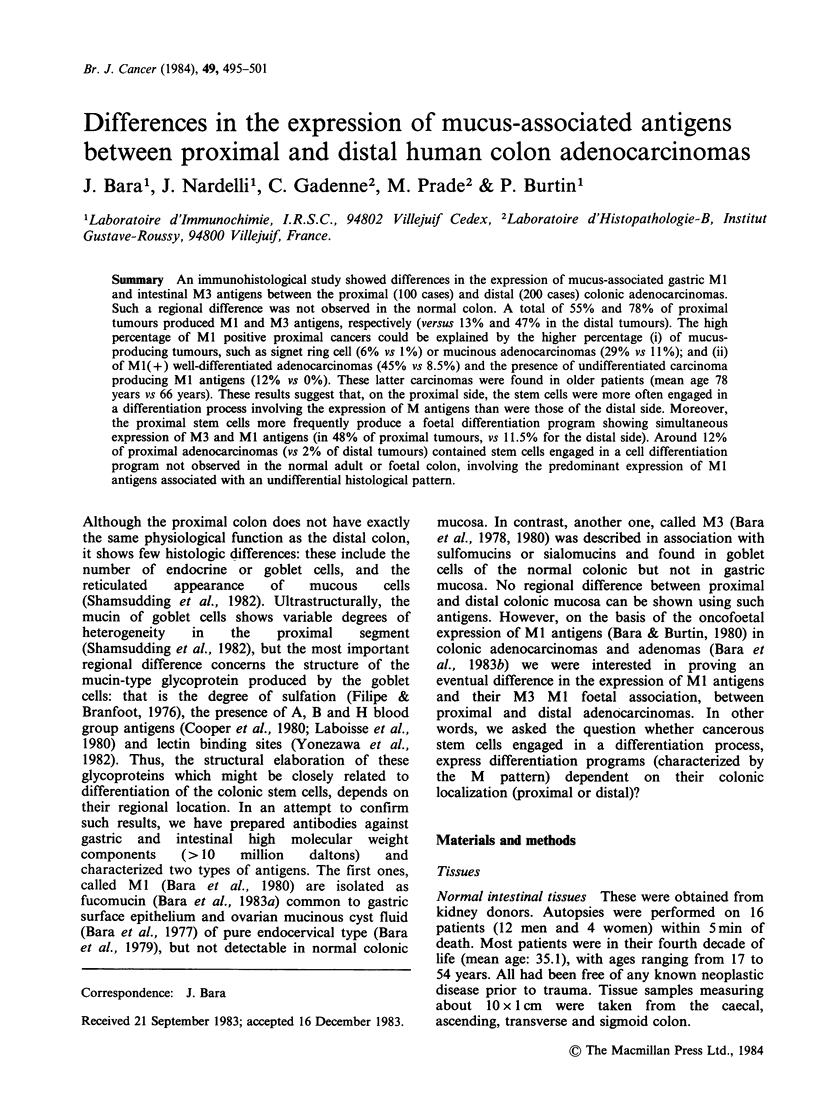
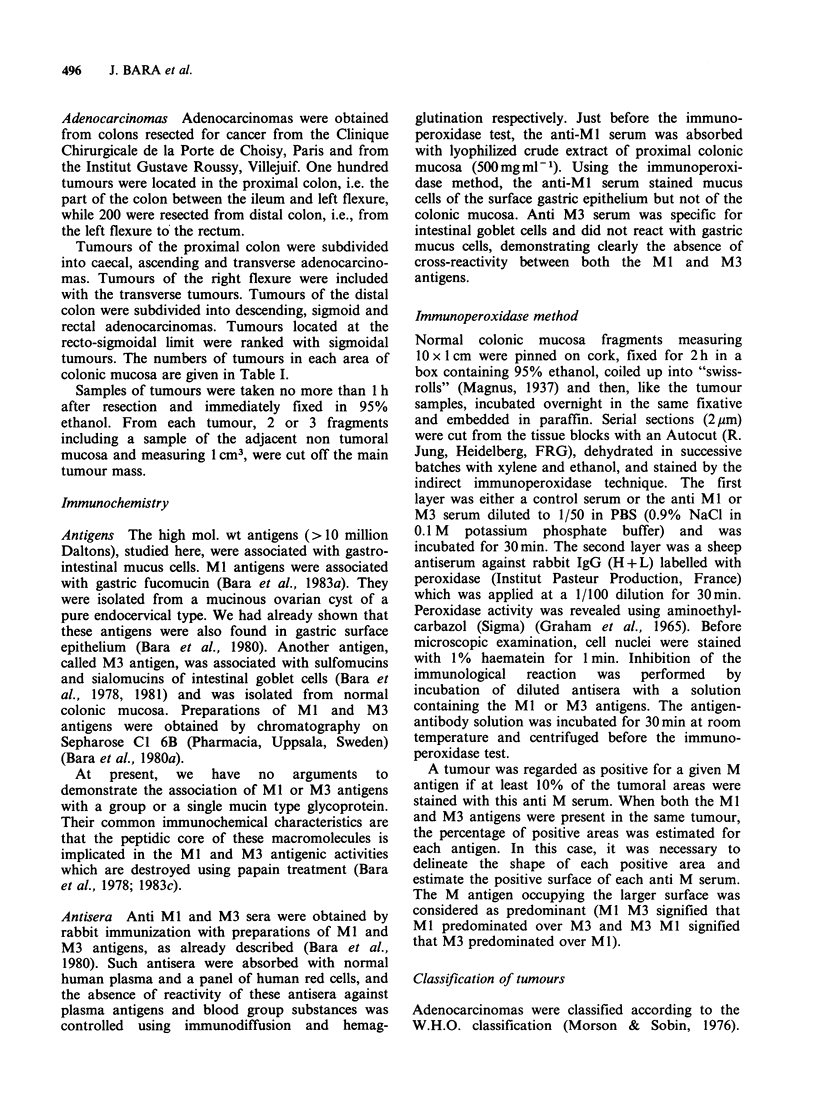
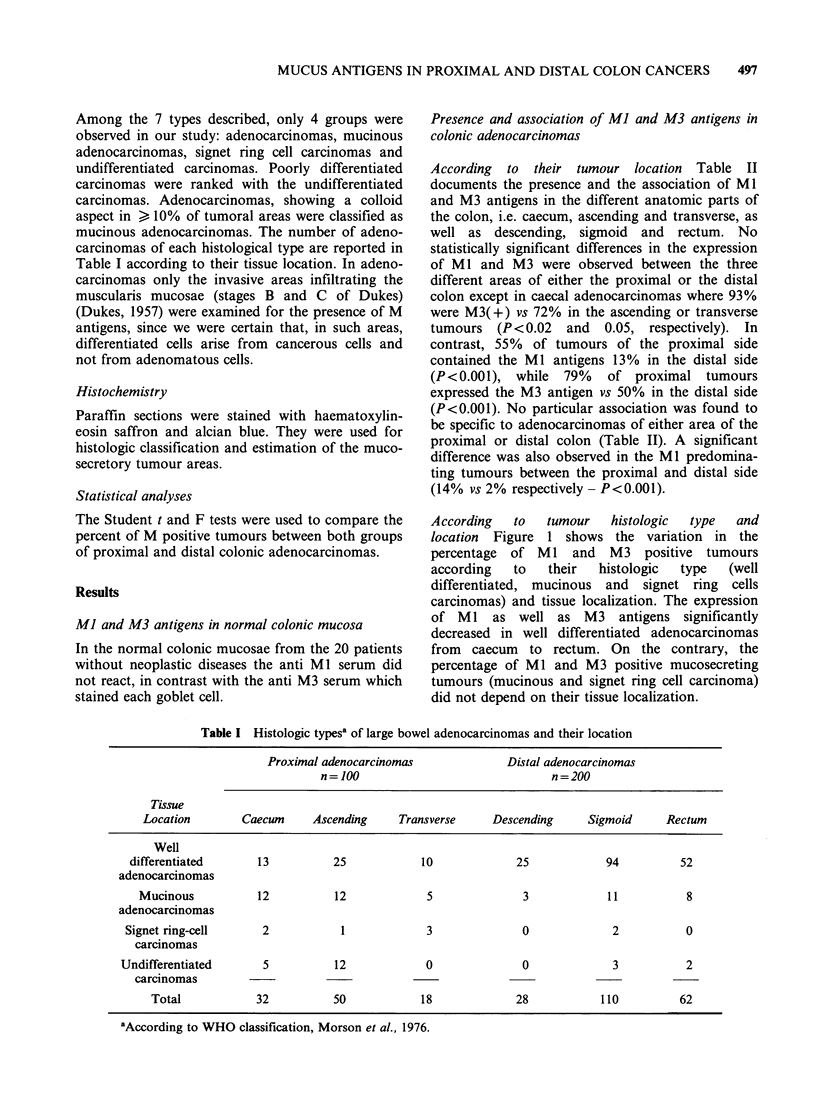
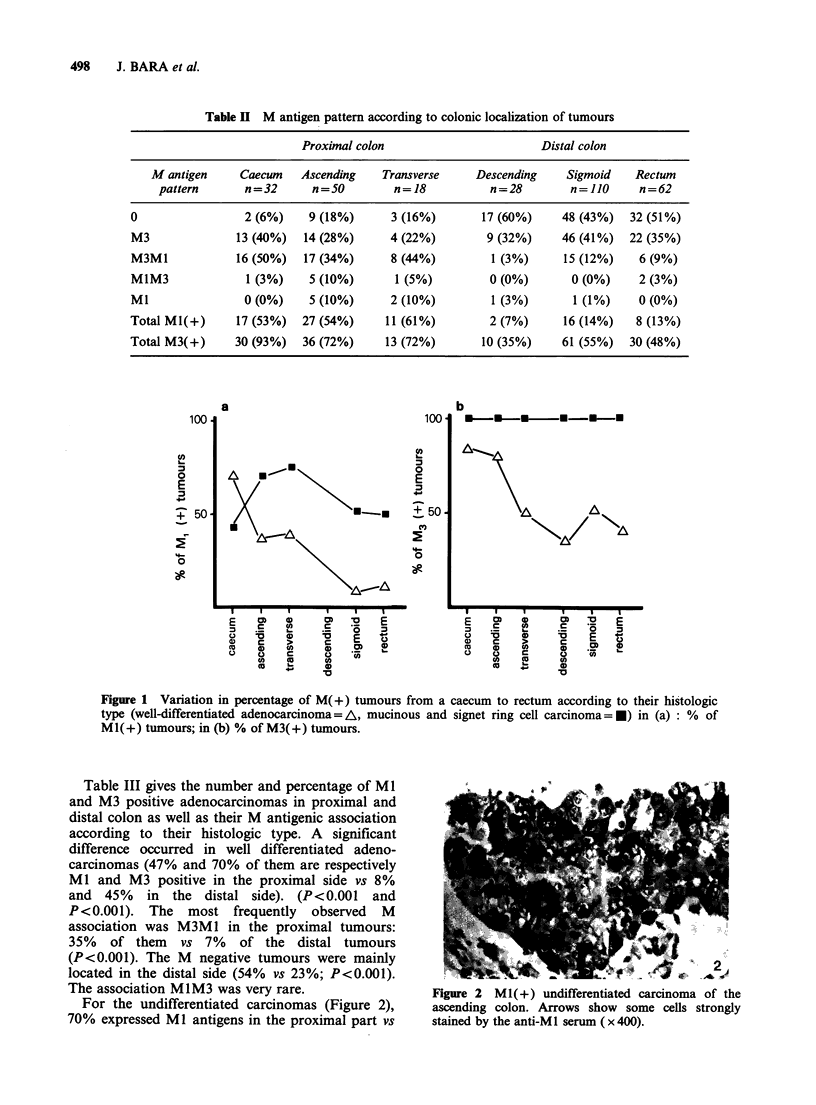
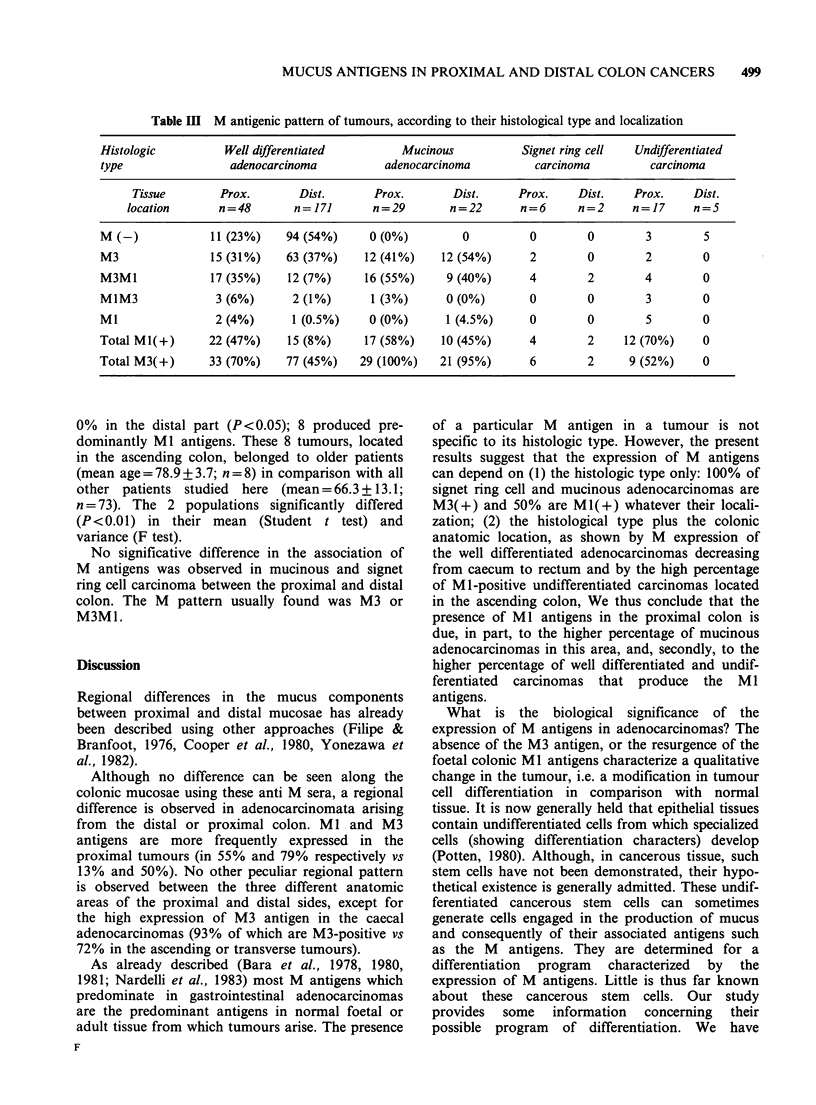
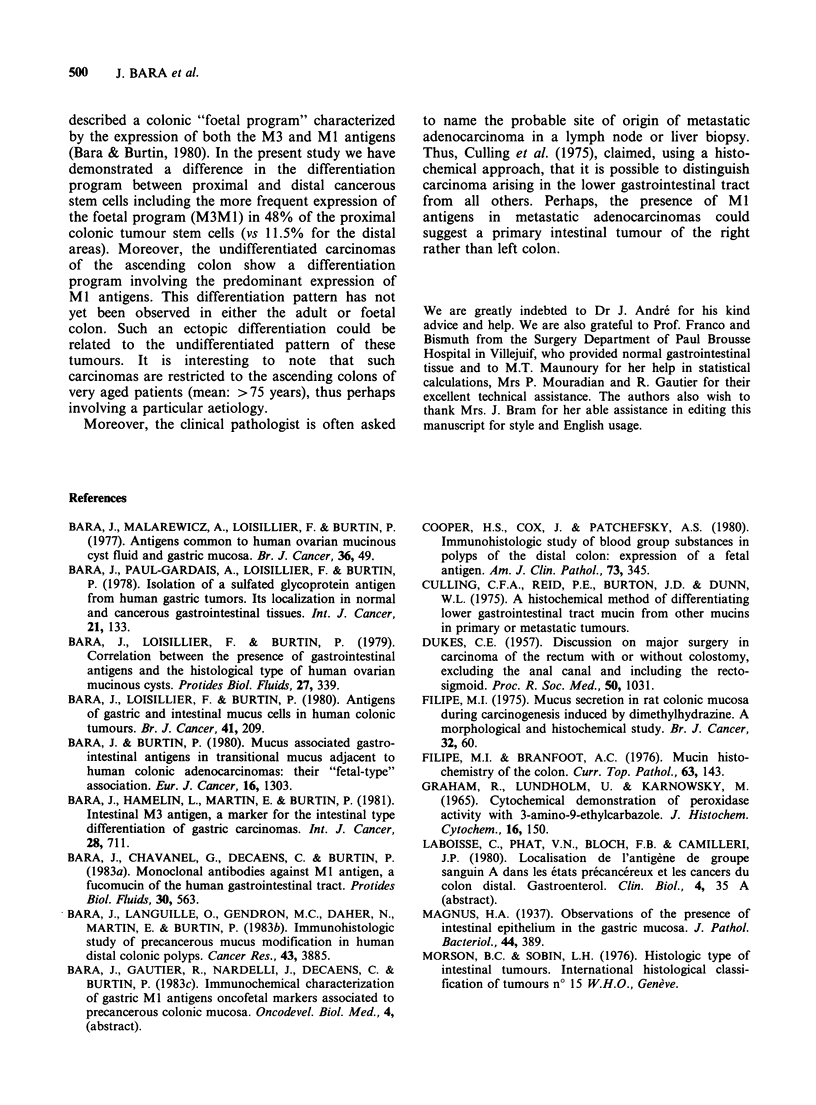
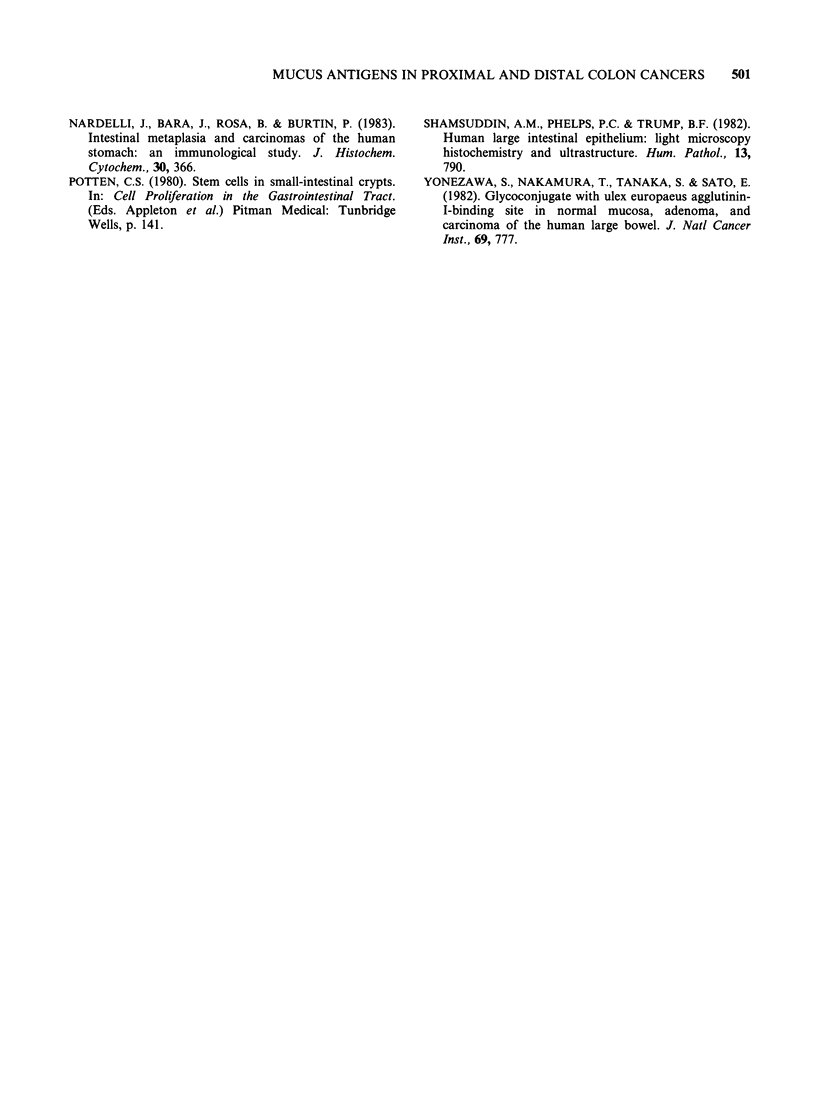
Images in this article
Selected References
These references are in PubMed. This may not be the complete list of references from this article.
- Bara J., Burtin P. Mucus-associated gastrointestinal antigens in transitional mucosa adjacent to human colonic adenocarcinomas: their 'fetal-type' association. Eur J Cancer. 1980 Oct;16(10):1303–1310. doi: 10.1016/0014-2964(80)90286-8. [DOI] [PubMed] [Google Scholar]
- Bara J., Hamelin L., Martin E., Burtin P. Intestinal M3 antigen, a marker for the intestinal-type differentiation of gastric carcinomas. Int J Cancer. 1981 Dec;28(6):711–719. doi: 10.1002/ijc.2910280609. [DOI] [PubMed] [Google Scholar]
- Bara J., Languille O., Gendron M. C., Daher N., Martin E., Burtin P. Immunohistological study of precancerous mucus modification in human distal colonic polyps. Cancer Res. 1983 Aug;43(8):3885–3891. [PubMed] [Google Scholar]
- Bara J., Loisillier F., Burtin P. Antigens of gastric and intestinal mucous cells in human colonic tumours. Br J Cancer. 1980 Feb;41(2):209–221. doi: 10.1038/bjc.1980.32. [DOI] [PMC free article] [PubMed] [Google Scholar]
- Bara J., Malarewicz A., Loisillier F., Burtin P. Antigens common to human ovarian mucinous cyst fluid and gastric mucosa. Br J Cancer. 1977 Jul;36(1):49–56. doi: 10.1038/bjc.1977.153. [DOI] [PMC free article] [PubMed] [Google Scholar]
- Bara J., Paul-Gardais A., Loisillier F., Burtin P. Isolation of a sulfated glycopeptidic antigen from human gastric tumors: its localization in normal and cancerous gastrointestinal tissues. Int J Cancer. 1978 Feb 15;21(2):133–139. doi: 10.1002/ijc.2910210202. [DOI] [PubMed] [Google Scholar]
- Cooper H. S., Cox J., Patchefsky A. S. Immunohistologic study of blood group substances in polyps of the distal colon. Expression of a fetal antigen. Am J Clin Pathol. 1980 Mar;73(3):345–350. doi: 10.1093/ajcp/73.3.345. [DOI] [PubMed] [Google Scholar]
- DUKES C. E. Discussion on major surgery in carcinoma of the rectum with or without colostomy, excluding the anal canal and including the rectosigmoid: general results of surgical treatment. Proc R Soc Med. 1957 Dec;50(12):1031–1035. [PMC free article] [PubMed] [Google Scholar]
- Filipe M. I., Branfoot A. C. Mucin histochemistry of the colon. Curr Top Pathol. 1976;63:143–178. doi: 10.1007/978-3-642-66481-6_5. [DOI] [PubMed] [Google Scholar]
- Filipe M. I. Mucous secretion in rat colonic mucosa during carcinogenesis induced by dimethylhydrazine. A morphological and histochemical study. Br J Cancer. 1975 Jul;32(1):60–77. doi: 10.1038/bjc.1975.134. [DOI] [PMC free article] [PubMed] [Google Scholar]
- GRAHAM R. C., Jr, LUNDHOLM U., KARNOVSKY M. J. CYTOCHEMICAL DEMONSTRATION OF PEROXIDASE ACTIVITY WITH 3-AMINO-9-ETHYLCARBAZOLE. J Histochem Cytochem. 1965 Feb;13:150–152. doi: 10.1177/13.2.150. [DOI] [PubMed] [Google Scholar]
- Nardelli J., Bara J., Rosa B., Burtin P. Intestinal metaplasia and carcinomas of the human stomach: an immunohistological study. J Histochem Cytochem. 1983 Mar;31(3):366–375. doi: 10.1177/31.3.6338105. [DOI] [PubMed] [Google Scholar]
- Shamsuddin A. M., Phelps P. C., Trump B. F. Human large intestinal epithelium: light microscopy, histochemistry, and ultrastructure. Hum Pathol. 1982 Sep;13(9):790–803. doi: 10.1016/s0046-8177(82)80075-0. [DOI] [PubMed] [Google Scholar]
- Yonezawa S., Nakamura T., Tanaka S., Sato E. Glycoconjugate with Ulex europaeus agglutinin-I-binding sites in normal mucosa, adenoma, and carcinoma of the human large bowel. J Natl Cancer Inst. 1982 Oct;69(4):777–785. [PubMed] [Google Scholar]



